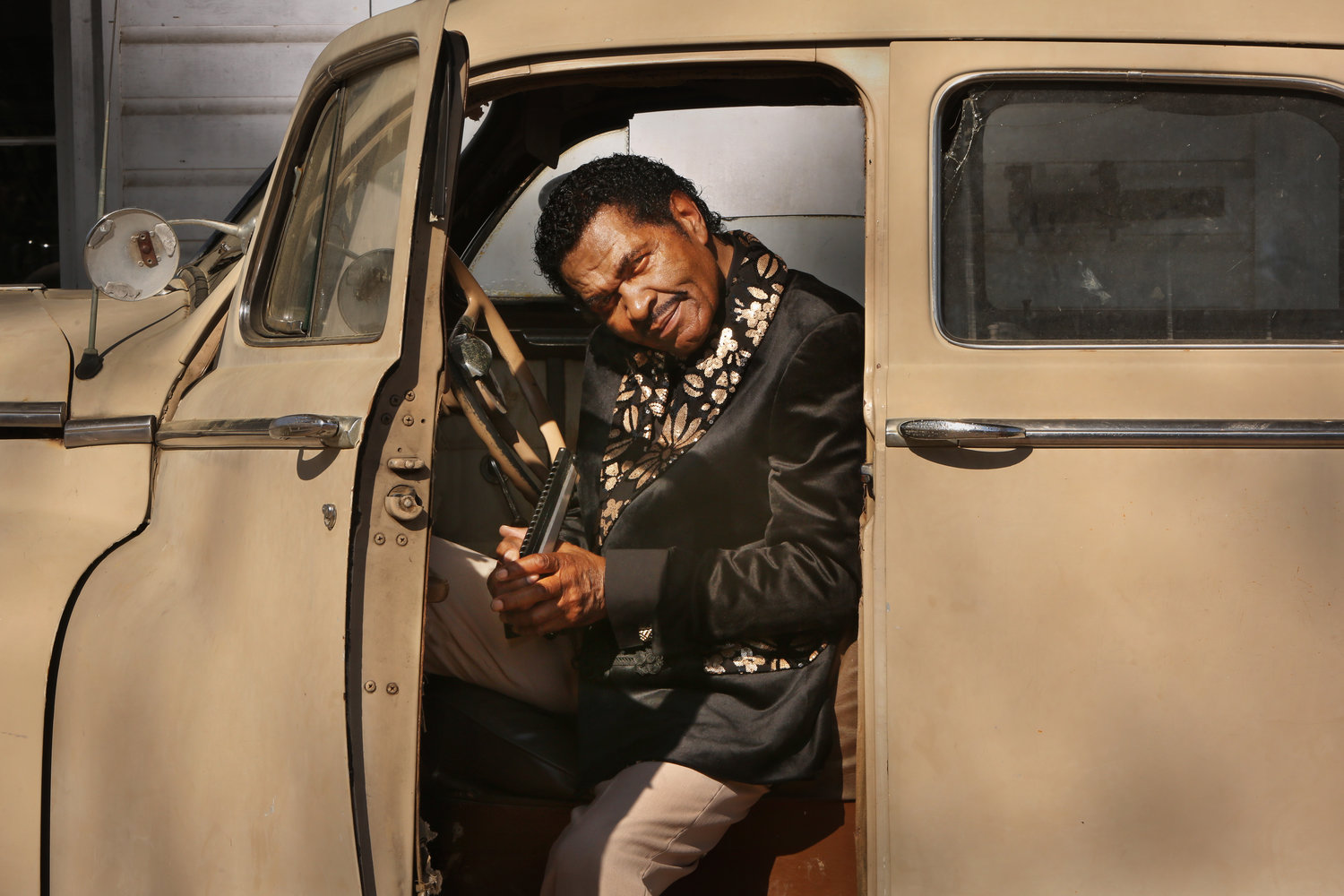
Photo credit: Bill Steber
Tell us about your tour vehicle. Any notable breakdown stories?
I’ve been traveling now in a tour van for the last 30 years or so. Between that time I believe I wore out four new vans. Each van had over 300,000 miles on it. The last two vans had over 200,000 miles on it. The breakdown and upkeep on the vans per year, probably run me about $18K-20K per year. I had a motor and transmission put in every 2-3 years because I’m pulling a trailer.
25-30 years ago and prior I toured with two buses. One bus I had was a double decker for about 4 years. The other bus I kept about 18 years. I put one motor in one and transmission in the other one. One time I was on my way to California around 1983 and I spent $20K on a motor. Something happened to that motor and I spent another $10K to repair that motor. It was close to $30K in 22 days. You couldn’t have a driver drive over 8 hours, so I had two drivers.
How do you eat cheaply and/or healthy while on tour?
I try to eat everything that flies or swims, which is tuna fish, chicken, baked chicken, and other fish. I try to stay away from fried food as much as possible. If I eat fried food, I try to get Popeyes chicken with baked beans and rice. I’m a Louisiana boy, so I like red beans and rice. I try to stay away from sodas too. I’ve been eating pretty healthy for the last 25-30 years.
How many strings do you break in a typical year? How much does it cost to replace them?
Haha… I buy strings at a bulk price. Most of the time, the big company gives me strings for advertisement purposes. I break about 20-30 strings per year. Most of the times they are A, B, and C strings. I don’t break the G and E’s that much. Even if I don’t break them, I change them out every 90 days or so to get a good quality so they stay in tune.
Where do you rehearse?
Haha… man all rehearsals, when you come down to getting the band together, I find a place that’s private. When people find out you’re rehearsing, they come to see you rehearse, and that bothers me. I like to rehearse in private.
Currently, I rehearse at sound check most of the time. If I have a sound check at 5pm, I’ll go a couple hours early. If there’s something I want the band to learn, I’ll play it on CD or on a phone while we are riding. We’ll write notes down about what we want to learn about it and then go over it at sound check.
When at home I have a place at my house to rehearse. The keyboard player has a studio in his place. A lot of times I’ll go to Fred’s house to rehearse there.
What was the title and a sample lyric from the first song that you wrote?
Ahh… I believe it’s called “What Now.” It talks about a woman and a man together. “I did everything I can do for you and it seems like you aren’t satisfied with what I’ve done, so what now. I’ve given you all my time, money, and all you’ve asked me for, and you still seem like you aren’t satisfied. What now.”
Describe your first gig.
Haha. One of the first gigs was in Pine Bluff, AR at a place called Drums. Believe me, the place was called Drums, and guess what I was playing. We didn’t have a drummer, so I played the drums on the first set. When I look back on it, I wasn’t a drummer. I could keep a beat but I wasn’t in time. It was around 1950. I wasn’t old enough to be in the club. I had to paint me a mustache in order to be in the club.
What was your last day job? What was your favorite day job?
I did some to get to buy me a guitar or an amplifier – it was all to get to making music. I worked at Kinkard Industry Aluminum Company in a suburb of Chicago in 1955-1959. Before that time I worked at service station, changing oil, tires, etc. I kind of ran the station of the guy in Chicago.
My first job I ever had in my life was in Pine Bluff, AR at the papermill, when they were building it. I was on the railroad, building the railroad to have a track train, to bring materials in to build the plant. I was on the railroad.
My second job was around 1950-51 in a town around Little Rock, AR at the airport of the Air Force Base. I think it was Jacksonville, AR. When they build the Army Base there, I was working for a construction company driving a truck. It’s still there, Little Rock Air Force Base in Jacksonville, AR.
How has your music-related income changed over the past 5-10 years? What do you expect it to look like 5-10 years from now?
It’s gone up. I think it’ll go up moving forward, too.
What one thing do you know now that you had wished you knew when you started your career in music?
I know more about the publishing and the A&R men who were submitting your contracts. At that time, a person could submit your contract with a name on your record, but when they submit to BMI your name wasn’t on it. They would leave you out as a writer or publisher on music you wrote back then. I wish I knew more about that then. If I had known what I know now, I would have been on top of publishing and writers rights.
